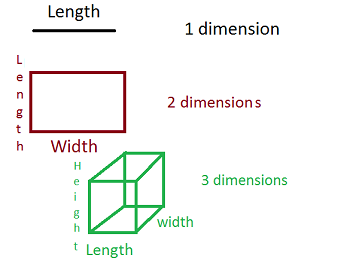How Google Display Ads Drive Measurable Growth for Advertisers in 2025
Introduction: The Strategic Role of Google Display Ads in Modern Marketing
In today’s competitive digital landscape, advertisers continuously seek ways to grow marketing results and deliver measurable business outcomes. Google Display Ads have evolved into a core tool for driving growth by connecting brands with audiences across millions of websites and apps. But how do these ads actually deliver results, and what actionable steps can advertisers take to maximize their impact?
Expanding Reach and Visibility
One of the most significant advantages of Google Display Ads is their unparalleled reach. In 2025, the Google Display Network (GDN) covers over 90% of all internet users across more than 35 million sites and apps, making it a powerful platform for ensuring your brand is seen by vast audiences [1] . This extensive coverage allows advertisers to maintain high visibility, even when users are not actively searching for their products or services.
For example, a regional retailer can use display ads to create awareness among potential customers browsing local news sites, lifestyle blogs, and mobile apps. By being present across a variety of digital touchpoints, brands remain top-of-mind and nurture potential leads throughout the customer journey.
Precision Targeting for Qualified Audiences
Display ads provide advanced targeting capabilities that go beyond basic demographics. Advertisers can leverage methods such as:
- Contextual targeting – Align ads with specific content categories or keywords to reach users interested in related topics.
- Geo-fencing & location targeting – Deliver ads to users within defined geographic areas, including neighborhoods, cities, or regions [3] .
- Audience segmentation – Target users based on behaviors, interests, and previous interactions with your brand (such as site visitors or email subscribers).
- Device and placement optimization – Tailor campaigns for desktop, mobile, or specific site placements to improve relevance and engagement.
For instance, a home services business may retarget website visitors with special offers, or a restaurant chain can promote seasonal menus to users in nearby zip codes. By focusing on high-intent segments, advertisers reduce wasted spend and improve campaign efficiency.
Driving Conversions Through Retargeting
Retargeting is a proven strategy for boosting conversions with display ads. By reconnecting with users who have previously interacted with your site or app, you can nurture their interest and guide them toward a desired action. In fact, retargeted display ads have been shown to increase conversion rates by up to 70% compared to standard campaigns [1] .
Consider an e-commerce store that retargets shoppers who abandoned their carts with personalized product ads. These timely reminders can prompt users to complete their purchase, driving revenue and improving return on ad spend (ROAS).

Source: confusedwords.org
Cost Efficiency and Budget Control
Google Display Ads are known for their budget-friendly pricing , with an average cost-per-click (CPC) of just $0.63 in 2025 [1] . This low entry cost enables advertisers to test different creatives, targeting options, and bidding strategies without risking substantial budget loss. Additionally, flexible budgeting allows for daily or campaign-level spend control, helping businesses of all sizes scale their efforts according to their goals.
For lead generation campaigns, advertisers can optimize for cost-per-action (CPA), ensuring that each conversion aligns with profitability targets and maximizing ROAS [3] .
Performance Metrics: Measuring and Optimizing Results
Effective campaign management requires monitoring key performance indicators (KPIs) to measure success and identify opportunities for improvement. The most critical display ad metrics include:

Source: es.learniv.com
- Impressions – Total number of times your ad is shown, indicating reach and brand awareness.
- Click-Through Rate (CTR) – Ratio of clicks to impressions; the average display CTR is 0.46% in 2025 [5] . Industries like dating and real estate may see higher rates, up to 1.08% [1] .
- Conversion Rate (CVR) – Percentage of users who complete a desired action post-click; Google Ads average CVR is 7.52% across all ad types, with display campaigns typically lower but still impactful [4] .
- Cost Per Action (CPA) – Average cost to acquire a lead or sale, essential for evaluating efficiency.
- Return on Ad Spend (ROAS) – Revenue generated per dollar spent, the primary profitability metric [3] .
Advertisers should segment these metrics by device, placement, and audience to uncover trends and inform optimization decisions. Continuous testing of creatives, landing pages, and targeting improves campaign performance over time.
Creative Strategies to Combat Ad Fatigue
With rising ad fatigue and competition, strong creative is essential for display campaign success. Effective ads feature:
- Clear and compelling visuals that communicate value instantly.
- Concise messaging with a strong call-to-action (CTA).
- Personalization based on audience interests or behavior.
- Responsive formats that adapt to various screen sizes and placements.
For example, an automotive repair shop might use before-and-after images to showcase service quality, while a travel agency could highlight stunning destination photos paired with exclusive offers. Regularly refreshing creatives helps maintain engagement and prevents ad fatigue.
Step-by-Step Guidance: Launching and Optimizing Google Display Ads
To harness the full growth potential of Google Display Ads, follow these actionable steps:
- Define campaign objectives – Clarify whether your goal is brand awareness, lead generation, sales, or retargeting.
- Segment your audience – Use Google Ads’ targeting tools to identify and reach qualified prospects based on location, interests, and behaviors.
- Develop creative assets – Design visually engaging ads with concise copy and a clear CTA.
- Set budgets and bidding strategies – Determine daily or campaign-level budgets and choose bidding options aligned with your goals (CPC, CPA, or ROAS).
- Monitor KPIs – Track impressions, CTR, CVR, CPA, and ROAS using Google Ads’ reporting dashboard.
- Test and optimize – Conduct A/B tests on creatives, landing pages, and targeting parameters to improve results.
- Refine campaigns – Continuously analyze performance data and adjust strategies to maximize growth and efficiency.
If you need additional support, you can consult Google’s official Help Center for setup instructions, or consider working with a certified Google Partner agency for advanced campaign management and optimization guidance.
Common Challenges and Alternative Approaches
Despite their benefits, display ads do face challenges such as low average CTR (0.46%) and potential ad blindness. Solutions include:
- Utilizing retargeting and audience segmentation to reach higher-intent users.
- Regularly updating ad creatives to combat fatigue.
- Optimizing landing page speed and relevance for better user experience.
Alternatively, advertisers can complement display campaigns with search ads, social media ads, and video ads to diversify their digital strategy and capture audiences across multiple channels [2] .
Key Takeaways and Next Steps
Google Display Ads are a proven catalyst for marketing growth, offering massive reach, precise targeting, and cost-effective performance. By tracking critical KPIs, refining creative strategies, and optimizing campaigns, advertisers can leverage display ads to drive substantial business results in 2025 and beyond. For those new to display advertising, start by defining your objectives and exploring Google Ads’ official resources for step-by-step setup guidance. Experienced marketers should consider advanced targeting and creative strategies to maximize ROI.
References
- [1] CropInk (2025). Are Display Ads Effective? See How They Actually Perform in 2025.
- [2] TheeDigital (2025). 2025 Google Ads Benchmarks.
- [3] Data Street Marketing (2025). Beyond the Billboard: Why Targeted Display Ads Still Win in 2025.
- [4] Wordstream (2025). Google Ads Benchmarks 2025: Competitive Data & Insights.
- [5] Store Growers (2025). 27 Google Ads Benchmarks (2025).
MORE FROM eboxgo.com













